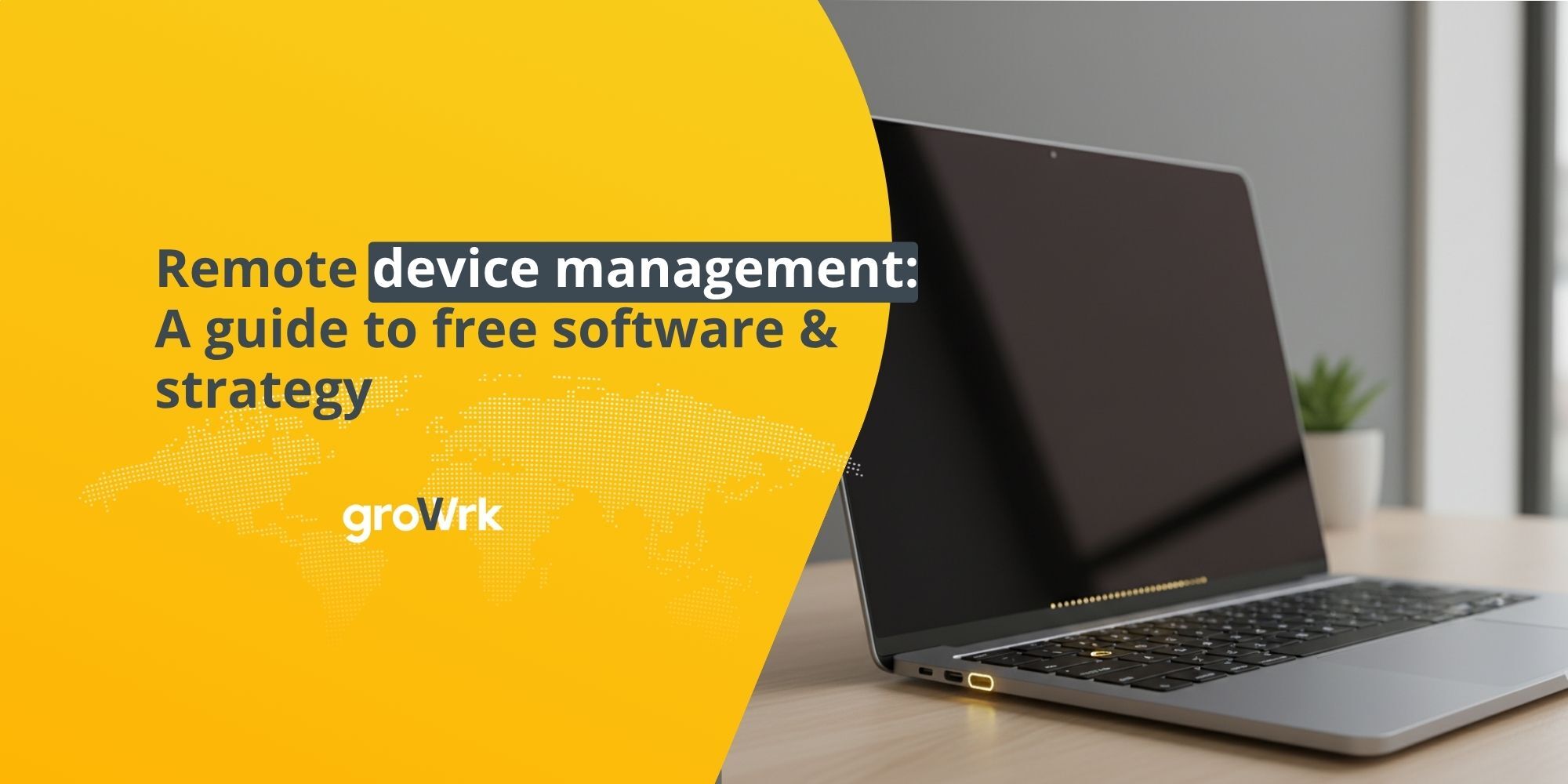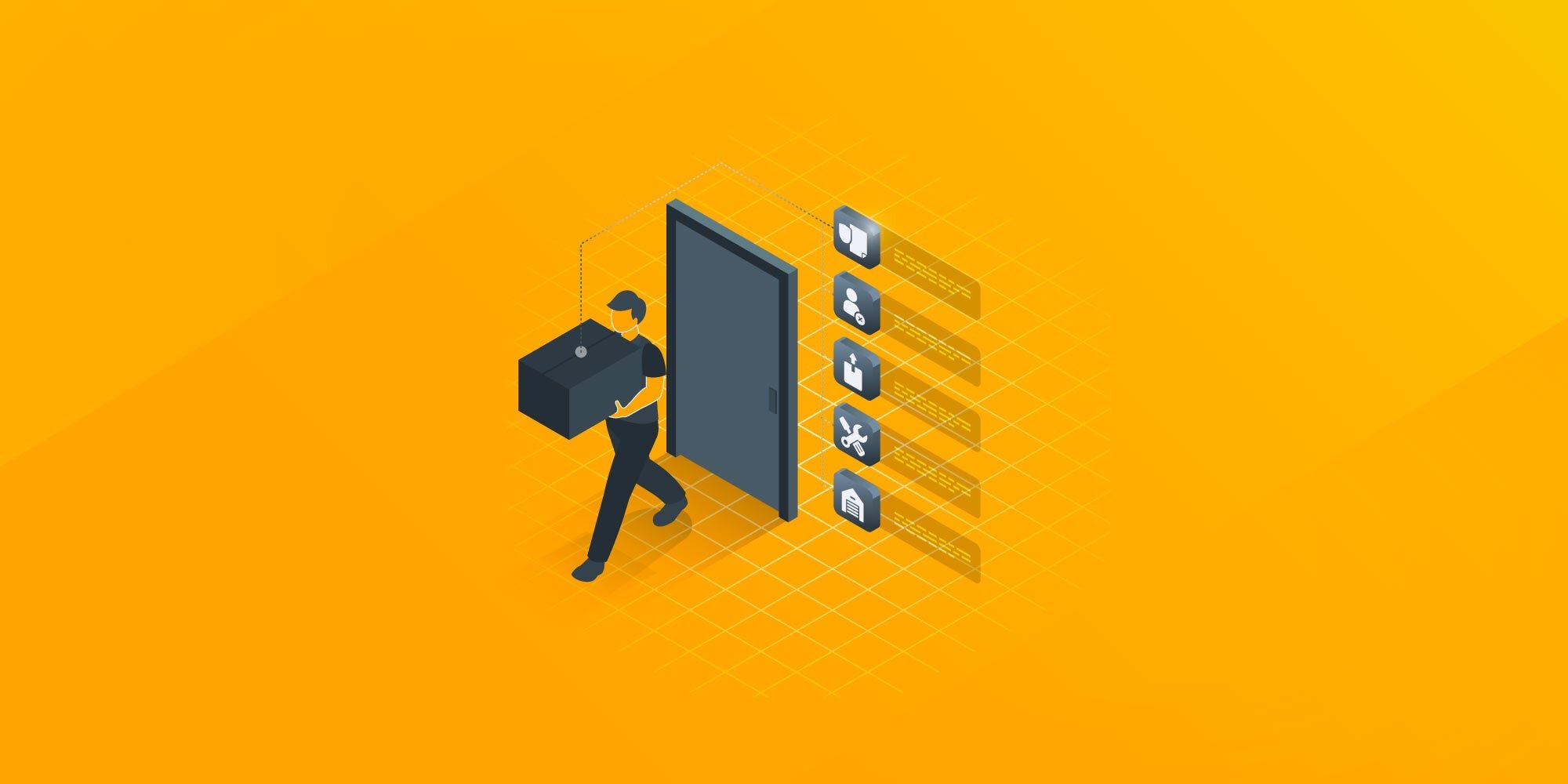Cyber security audit checklist for remote work 2023
 GroWrk Team
GroWrk Team
With over 30% of the global workforce continuing to work from home in 2024 and a preference for hybrid returns to the office, it seems the great remote work experiment has gone swimmingly.
No need for any type of cyber security audit checklist or cyber security assessment. However, as with any good thing, sometimes we can get lulled into a false sense of “cyber” security.
- The FBI saw a 300% increase in reported cybercrime in 2020
- Attacks targeting remote workers grew five times in the first six weeks of lockdown
- 20% of organizations experienced a data breach linked to remote workers
A cyberattack leaked confidential information, or failed data compliance could end up costing your business millions.
Part-time remote work will be the norm for many companies for the foreseeable future. Now’s the time to consider your organization’s and your own security strategies and where they may be lacking.
The key is to implement strong safety measures that don’t take away from the flexibility of working from home.
The cyber risk that comes with remote work and the need for a cyber security assessment
It is relatively common knowledge that home connections are less secure than the wifi network at the office. Not many people have invested in a pentagon-grade cybersecurity system for their living room.
As a result, cybercriminals can walk into any company network if they target the right person. Even worse is that most remote teams rely on cloud tools for collaboration and productivity but don’t realize they are using the bare minimum of security default settings.
Who actually reads those app updates about the changes in security preferences?
It was so much easier to lean over in the office and ask your coworker if they saw that weird email from the boss that was asking for their phone number or to click on the link. When working from home, phishing is usually an afterthought.

So, asking the @security or IT channels (if you have them) on Slack or Microsoft Teams about that strange message is probably out of the question for less tech-savvy workers.
Then before you know it, someone rushing to get their tasks done for the day leaves the whole organization exposed. Lastly, let's say that someone gets hacked and hit with ransomware attacks asking for 1 million dollars in Bitcoin.
Their connection to the company will be blocked, and as they panic, they won’t know where to get help from the right experts and authorities. Trust is also lower in a remote setting, so if it happens to a new employee; they might keep quiet, thinking that it was their fault.
Last year, when many large organizations sent their workers home, they did a security analysis and saw many of these holes in their IT infrastructure. As a result, around 70 percent of major organizations increased their cybersecurity budgets.
What were some of the most common gaps they discovered with having a distributed workforce?
Top 6 Cybersecurity Threats of Remote Work
1. Old computers
Many workers in the United States were using their home computers that likely were older than their work laptops and did not have the latest security software.
2. No VPN
A majority of new remote employees access company networks insecurely. This means they were logging in from their personal IP address without a VPN, so it would have been easy to hack and track their movements.
3. Home wi-fi security
This tends to be an afterthought in many households with easy-to-remember passwords and multiple devices connected. This increases the number of opportunities that a hacker has to attack.
4. Unsecured networks
Remote workers have the flexibility to work from anywhere, but that always means that they could be logging in hours from unsecured networks. In a recent survey among remote employees, 37 percent said they connect from coffee shops/restaurants, while 27 percent said they worked from someone else’s home.
5. Dangerous apps on company laptops
Employees using company laptops may also open themselves up to risk by using unapproved apps. These apps can be easily hacked or come with malicious software that can infect a laptop without the employee even realizing it.
6. No password resets
In a recent survey by Igloo software, two-thirds of remote workers said their employees didn’t encourage password resets, using multiple passwords or a password manager tool. They also didn’t provide regular cybersecurity training. Even worse, less than a quarter manage confidential data with encrypted files and folders.

The cyber security audit checklist for remote work
So, now that we know the most common security risks for remote work, you should understand how parts of your network might be lacking the ability to prevent, defend and detect threats.
Below, we have created a checklist to consider how up-to-date your security infrastructure is while working in a distributed environment. We split it into three key areas that are part of a successful audit.
Protecting confidential information from a security risk
The first place you should look seems reasonably straightforward - your password protection. Workforces continue to grow across distributed companies, and each new employee needs their own set of passwords or codes.
Even industries that have been reluctant to allow full-time remote work have digitized their systems and require company-wide logins.
Unfortunately, according to an international study by Sailpoint one in four respondents shared work passwords with a 3rd party, partner, roommate, or friend.
Adding insult to injury, over half of the total U.S. respondents did not change their work passwords in the last six months, and 32% didn’t change them in 12 months or longer.
We are talking about multiple parties in a distributed team who could be using the same eight letter password from 2019 to access company drives.
If any of these employees are using an unsecured IP address or working off of public wifi, they could easily be hacked, and now that password is being sold on the dark web.

Here are some of the areas you should take into consideration when analyzing your password practices and your cybersecurity audit:
Do you have a hardware-based VPN for remote access installed on all company laptops?
- These programs hide your IP address and make it almost impossible to see where employees are logging in from.
- A single VPN that is available to all remote employees is your best option.
Do you have identity and access management solutions like multi-factor authentication (MFA), single sign-on (SSO) capabilities, cryptography, or biometrics?
- MFA is having a password and several other factors such as an email confirmation or a text message code to log in to an application. Slack and Google Suite already have these options, but they can also be applied to other essential remote work software.
- SSO uses a password manager or a service like 1auth that offers encrypted logins with just one click. It just takes a bit of time to set up.
- Biometrics is using a fingerprint or eye scan to access secure devices or applications.
Does your administration encourage changing passwords every six months?
- Simply changing your access codes twice a year eliminates much of the problem that occurs with password sharing.
Guarding sensitive information against cyberattacks
The next step is taking a look at how you are defending yourself internally from cyber security threats. Technology has enabled remote work to be successful during a global pandemic, but it has also allowed bad actors to create new hacking threats.
Not one particular solution will solve all your cybersecurity needs. It is a problem that is constantly evolving without any particular endpoints. The more companies become distributed and hybrid, the greater the “attack surface” of your company gets.
Not to mention hacking parties can now range from governments to employees. The natural gas pipeline recently hacked by an anonymous group was not an isolated incident, and there will be more attacks on crucial supply chains.

Senior management needs to develop corporate skills and capabilities to be ready for any possible scenario. Much of this prevention can be done by consolidating your sensitive information and ensuring your data compliance.
Ask your team these IT security audit questions:
Do you house all your important information on secure cloud services such as Microsoft One Drive, Amazon Web Services, Google Drive, or Dropbox?
- Contrary to common belief keeping everything in one secure place limits the space where attacks can occur.
- Most of these products have advanced auditing capabilities to retain records for a year and can enable forensic and compliance investigations.
Do you ensure compliance with privacy regulations?
- Whatever platform you select should enable your organization to easily comply with relevant industry regulations (e.g., HIPAA, GDPR, etc.).
Detecting cybersecurity threats before they occur
It may sound cynical, but the most prominent kink in an organization’s armor is usually the employees themselves. Human error is one of the main reasons why a data breach might happen.
However, your employees can also be your greatest asset in detecting threats. With the proper yearly training, you can keep everyone in the loop about the latest tactics by hackers and make reporting a common practice.
Your employees will be able to spot phishing emails easily, and you can empower your IT to run monthly monitoring and maintenance. This also means moving beyond the previous IT infrastructure and investing in solutions that will support future operations.
IT teams should look for platforms that incorporate capabilities like project risk predictions, task prioritization, and tagging. There are even options to utilize AI to provide security recommendations and threat detection that streamline operations.
Do you provide regular cyber security training and workshop sessions for all your employees?
- You can outsource this training to an agency or have your IT department conduct it.
Do you use security monitoring such as anti-virus malware software?
- There are hundreds of enterprise options that can run monthly automated scans or testing.
Do you encourage your employees to apply updates/patches on your computers regularly?
- Your IT department should be given the resources to roll out security patches on time.
Do you have a cybersecurity knowledge base?
- This can take a variety of forms, including reporting procedures and hacking examples.
Do you have a no-blame environment?
- Cultivate a culture where employees feel comfortable reporting mistakes and know there will be no consequences.
In a study conducted by Beyond Identity, they discovered that the top security concerns about remote work among IT professionals were:
- Devices may be more exposed at home
- Difficulty managing new devices using remote work resources
- IT support not being adequate for remote work
- Cyber security protections for personal networks and devices.
This concern certainly speaks to the survey by Sailpoint that found 1 in 3 U.S. employees use their own computer and smartphone for remote work, while only 17% use a computer and smartphone owned by their employer.
In EMEA and ANZ, half of the employees surveyed worked remotely with their employer's technology.

With such a global divide and a variety of remote working situations, there needs to be a comprehensive solution that considers the different realities of distributed work.
It can be difficult trying to regulate all of the personal devices of your international employees, checking to see if everyone has installed security software manually and is using a secure network to work.
However, there is the option to send them devices or update their current ones with all the protection and IT management already installed.
A global device distribution service like GroWrk can send state-of-the-art laptops with remote access, hardware-based VPNs, and cybersecurity software pre-installed to 150+ countries.
%201.02.16%20a.%20m..png?width=831&height=427&name=Captura%20de%20pantalla%202024-04-17%20a%20la(s)%201.02.16%20a.%20m..png)
Suppose you are onboarding new employees or are doing an IT infrastructure overhaul. In that case, their intuitive dashboard makes it easy to manage all your devices in your inventory, order new ones, or pick them up when an employee leaves.
If there ever is an issue or breach, there is 24/7 help desk support. The remote access software also makes it easy to roll out patches and ensure data compliance without waiting for employees to install. It’s like having an IT closet in the cloud.
You can rest easy knowing that employees are working securely and then bolster their knowledge with relevant cyber security tips, best password practices, and threat detection strategies.
Wrap up
As the way we work continues to evolve, so do our strategies for protecting what we are building. Cyber security should not be an afterthought for any organization that incorporates remote or hybrid work.
Organizations need to make a conscious effort to keep their employees informed, their devices and information protected, and give their IT departments the ability to detect threats or vulnerability in defenses.
The topic may be met with a collective groan by some people, or there can be concerns that added security protocols might slow growth. However, it is just another step in the development of remote work. A security breach will hinder progress much more extensively than any IT training.
Let GroWrk help you make the transition to secure work-from-home policies.
Discover the platform that will get your distributed team everything they need to be successful. From laptops to standing desks, from the U.S to any location in the world.







